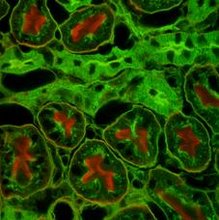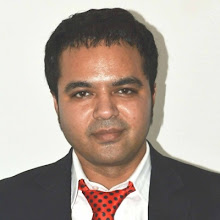Introduction:
The HL60 cell line was established in 1977 from a patient with acute myeloid leukaemia.
Characteristics:
The cells largely resemble promyelocytes but can be induced to differentiate terminally in vitro. Some reagents cause HL60 cells to differentiate to granulocyte-like cells, others to monocyte/macrophage-like cells.
Genomic content:
The HL60 cell genome contains an amplified c-myc proto-oncogene; c-myc mRNA levels are correspondingly high in undifferentiated cells but decline rapidly following induction of differentiation.
Nutritonal requirements
HL-60 (Human promyelocytic leukemia cells) cell line derived from a patient with acute promyelocytic leukemia proliferates continuously in suspension culture in nutrient medium supplemented with fetal bovine serum, L-glutamine, HEPES and antibiotic chemicals. The HL-60 cells continuously proliferate in suspension culture with a doubling time of about 36-48 hours.
Proliferation of HL-60 cells occurs through the transferrin and insulin receptors, which are expressed on cell surface. The requirement for insulin and transferrin is absolute, as HL-60 proliferation immediately ceases if either of these compounds is removed from the serum-free culture media (Breitman et al1., 1980).
Applications :
For Molecular Biology : features have made the HL60 cell line an attractive model for studies of human myeloid cell differentiation. This review summarizes the major properties of HL60 cells, describes some aspects of the regulation of gene expression in differentiating HL60 cells, including a novel interaction between transcriptional and post-transcriptional controls, and discusses the possible involvement of c-myc in proliferation and differentiation. The HL-60 cultured cell line provides a continuous source of human cells for studying the molecular events of myeloid differentiation and the effects of physiologic, pharmacologic, and virologic elements on this process. For examples, Gallagher et al2. (1979) report that the characterization of HL-60 cells from a patient with acute promyelocytic leukemia is predominantly a neutrophilic promyelocyte. HL-60 cell model was used to study the effect of DNA topoisomerase (topo) IIα and IIβ on differentiation and apoptosis of cells (Sugimoto et al3., 1998).
Cell Biology and differentitaion: Spontaneous differentiation to mature granulocytes can be induced by compounds such as dimethylsulfoxide (DMSO), retinoic acid. Other compounds like 1,25-dihydroxyvitamin D3, 12-O-tetradecanoylphorbol-13-acetate (TPA) and GM-CSF can induce HL-60 to differentiate to monocyte, macrophagelike and eosinophil respectively.
For Drug evaluation: Thus, HL-60 cell line provides a unique in vitro model system for studying the cellular and molecular events, especially in the dielectrophoresis study4 that aqueous environment, suspended and round cells are needed.
Materials:
HL60 has been obtained from the National Centre for Cellular Science, Pune
Fetal Bovine Serum (FBS): Latin American origin , maintained in tissue culture dishes in RPMI 1640 medium
RPMI: Hyclone
Glutamine:
100 U/ml of penicillin G, and 100 µg/ml of streptomycin solution:
Other material requirements:
Sterile :
Growing medium, e.g. 1X MEM with Earle’s salts, 23mM HCO3 without antibiotics 100 ml
Trypsin 0.25 % in D-PBSA 10 ml
Pipettes (graduated and plugged) glass – of 1//5/10/25 ml
Unplugged pipettes with the vacuum line
Culture flasks 25 cm2
Non-sterile:
Bulb, Tubing receiver to vacuum line or plastic pump
Alcohol 70 %
Lint free swabs or wipes
Absorbent tissue papers
Marker pen with alcohol insol. Inc
Hemocytometer/Electronic cell counter
Methods:
Relative plating efficiency:
Seed Two hundred cells were onto a 60/15-mm plastic plate with 4 ml culture medium and incubate overnight at 37 °C.
Add in DMSO (4 µl) to the culture medium,
Further culture cells for four days.
Count numbers of viable cells/colonies in the sample plates and compare with those in the control cultures.
Cell viability by trypan blue method : a microscopy based protocol:
Prepare a cell suspension at a high conc (~1 X 106 cells/ml) by trypsinization or by centrifugation and resuspension
Take a clean hemocytometer slide and fix the coverslip in place
Mix one drop of cell suspension with one one drop (Trypan Blue) or four drops (Napthalene Black) of stain
Load the counting chamber of hemocytometer
Leave the slide for 1-2 min (do not leave any longer or viable cells will deteriorate and take up the stain)
Place the slide on microscope and use a 10X objective to look at the counting grid)
Count total number of cells and number of stained cells
Wash hemocytometer and return it to its box
Population Doubling Time:
Protocol:
Prepare the hood and bring reagents and materials to the hood to begin procedure
Examine cultures carefully for signs of deterioration or contamination
Check criteria and based on knowledge for behavior of culture and decide whether or not to subculture
Take culture flask to sterile working area and remove and discard medium. Handle each cell line separately, repeating procedure from this step for each cell line handled
Trypsinize cells as for regular subculture
Dilute cell suspension to 1X105 cells/ml, 3X104 cells/ml, and 1X 104 cells/ml in 25 ml of medium for each conc.
Seed three 12-well plates with 2 ml of 1 X 104 cells/ml suspension to each well of top 4 wells, 2 ml of 3X104 cells/ml to each well of the second row and 2 ml of 1X105 cells/ml to each well of third row. Add cell suspension slowly from center of well so that it does not swirl around well. Similarly do not shake plate to mix the cells, as circular movement of medium will concentrate cells in the middle of well.
Place plates in a humid CO2 incubator or sealed box gassed with 5% CO2.
After 24hr remove first plate from incubator and count cells in three wells at each concentration,
Remove medium completely from three wells containing cells to be counted
Add 0.5ml of trypsin /EDTA to each of three wells
Incubate plate for 15min
Add 0.5ml medium with serum, disperse cells in tryspin /EDTA/medium and transfer 0.4ml of suspension to 19.6 ml of D-PBSA.
Count cells on electronic cell counter
Stain cells in remaining wells at each cell density
Repeat sampling at 48 and 72 hr as in step 5 and 6
Change medium at 72 hr or sooner if indicated by a drop in pH.
Continue sampling daily for rapidly growing cells (i.e.e cells with PDT of 12-24 hr) but reduce frequency of sampling to every 2 days for slowly growing cells (i.e. cells with PDT > 24 hrs) until plateau phase reached.
Keep changing medium every 1,2 or 3 days, as indicated by fall in pH.
Analysis of monolayer growth curves:
Primary count: cells/ml
Cell/flask OR well
Cell concentration: cells/ml of culture medium
Cell density: cells/cm2 of growth surface
Plot cell density (cell/cm2) and cell conc (cells/ml) both on log scale against time on a linear scale.
Determine lag time, PDT and plateau density
Establish appropriate-starting density for routine passage. Repeat growth curve at diff cell conc if necessary
Complete growth curves under different conditions and try to interpret data
Examine stained cells at each density to
1. Determine whether the distribution of cells in flasks/wells is uniform and whether cells are growing up the sides of wells
2. Observe differences in cell morphology as density increases
3. Compare cell-cell interaction in normal and transformed cells
References:
Breitman, T, S. Collins, B. Keene, 1980. “Replacement of serum by insulin and transferring supports growth and differentiation of the human promyelocytic leukemia cell line, HL-60”. Exp. Cell Res., 126, 494-498.
Gallagher, R. S. Collins, J. Trujillo, K. McCredie, M. Ahearm, S. Tsai, R. Metzgar, G. Aulakh, R. Ting, F. Ruscetti and R. Gallo, 1979. “Characterization of the continuous, differentiating myeloid cell line (HL-60) from a patient with acute promyelocytic leukemia”. Blood, 54:3, 713-733.
Sugimoto, K, K. Yamada, M. Egashira, Y. yazaki, H. Hirai, A. Kikuchi and K. Oshimi, 1998. “Temporal and Spatial Distribution of DNA Topoisomerase II Alters During Proliferation, Differentiation, and Apoptosis in HL-60 Cells”. Blood, 91:4, 1407-1417.
Ratanachoo, K., Gascoyne, P.R.C. and Ruchirawat, M. 2002. Detection of cellular responses to toxicants by dielectrophoresis. BBA. 1564, 449-458
Subscribe to:
Post Comments (Atom)


2 comments:
Thank u..sir..it's really helpfull 2 us...
Post a Comment